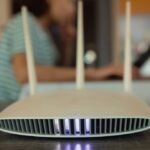At the end of the day, do you shut down your computer or do you put it into sleep mode? Depending on what you need from your device the next day, you might want to consider which option benefits you the most. Here are some of the pros and cons of both approaches so that you can pick which one best suits your situation.
Understanding the Difference
Before you can identify which one suits your needs, you should first understand the difference between what they do. When a computer shuts down, it will first turn off any software that might be in use before the hardware itself shuts down. Your operating system will send a message to any open programs to stop reading and writing files so that they can be prepared for the hardware shutdown. Once all of the software has shut down, the physical components can now start their shutdown processes. Most notably, the physical hardware gradually loses power, which keeps your workstation safe from surges and other types of damage. This is also why you should never turn off your computer by holding down the power button.
On the other hand, a computer in sleep mode will use its RAM to store open files and run in a low-power state. It also limits which software and hardware are running so that limited resources are being used. These can then be reactivated at any time.
The Benefits of a Full Shutdown
One of the greatest benefits of a full system shutdown is that your operating system will have a chance to restart itself, so to speak, by getting rid of minor OS problems. If you go too long without a reboot, these issues could increase and become a major impediment in the future. In fact, many updates to the Windows operating system require a full restart in order to install properly.
Power issues can be reduced considerably by following the proper computer shutdown process. A computer uses less power when it’s off compared to when it’s on, even in sleep mode. However, as long as a computer is left on, there will always be a chance of a power surge hitting the device and doing damage. A complete shutdown can potentially limit this risk.
The Benefits of Sleep Mode
The first and arguably most convincing benefit of sleep mode is the convenience that it provides. You won’t have to wait for your device to boot up again the next time you plan to use it. One instance of this might not merit much of an increase in productivity, but repeated instances will certainly be of value. Another benefit of placing your computer in sleep mode is that it can run basic maintenance when it’s needed. This could include security updates and other types of general upkeep that your device won’t take advantage of when it’s turned off.
Why to Consider Both
Keeping all of this in mind, it would make sense to customize your approach to system shutdown and sleep mode based on your specific needs. One of the best ways to do this is by shutting down your computer at the end of the day, and only putting it in sleep mode when you walk away from it for a few moments. This approach allows you to remain productive during the workday while also ensuring your device is still maintained during the off hours.
However, if you want your devices to be upgraded during the office’s quiet hours, it’s crucial that you leave your workstations on. This allows for the automation of security updates and patching, which is a valuable asset in its own right.
Do you typically leave your computer on or off? Let us know in the comments, and be sure to subscribe to our blog.





